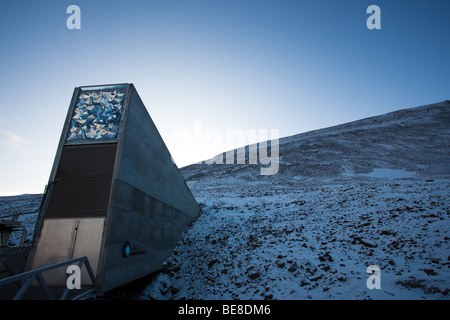

And this happened in four out of the last five years,” Kapikan concluded. Climatologist Robert Graham told the AFP press agency that “positive temperatures in the North Pole have been registered only four times from 1980 to 2010.

An extraordinary all time record that was reached in northern Greenland. Temperatures in the Arctic region reached 6☌, 35 degrees above the seasonal average. Read also: Seeds of Time, a documentary to plant the seeds of change After all, temperatures in the North Pole last year were extraordinary as well. Hege Njaa Aschim, a member of the Norwegian Government (owner of the vault) declared that “a lot of water went into the start of the tunnel and then it froze to ice”. The Global Seed Vault suffered water damage caused by the melting of permafrost due to the extraordinary temperatures that were predicted by researchers who study global warming, but still shouldn’t have been able to melt what is by definition a permanently frozen terrain. Permafrost also posed the greatest threat to the seed vault and those who manage it, even though it was designed to withstand natural and human-related disasters for one millennia, including asteroid impacts and a nuclear war. Permafrost acts as a natural refrigerant helping the vault maintain a constantly rigid temperature, which is vital for the conservation of seeds. The geographical area is remote and is considered geologically stable. The seeds are located inside rock vaults approximately 120 metres below ground and are conserved in a dry environment, with an average temperature of -18 degrees. This is the only way to contrast all of these problems and protect our plant heritage. The main threats to the planet’s crop diversity are water scarcity, habitat loss and global warming that is causing climate change and its effects, like the melting of the ice caps. In fact, estimates show that 9 billion people will inhabit our planet in 2050, compared to the current 7.5 billion. This facility was created because of various issues that are threatening the planet’s crop diversity, in a time when there’s a need to increase crop yields in a limited surface dedicate to crop growing. Brian Lainoff, spokesperson of the Crop Trust declared that “Preserving global biodiversity in this way is exactly the objective of the Svalbard Global Seed Vault”. Amongst these seeds there were some species of grain and orzo that can grow in arid areas. ICARDA requested the restitution of 130 out of the 325 samples that had been deposited, containing a total of 116,000 seeds. A fratricidal war that caused more than 340,000 deaths in the course of seven years and forced tens of millions of people to abandon their homes. On 23 September 2015 the Global Crop Diversity Trust website declared that the International Center for Agricultural Research in Dry Areas (ICARDA), a seed bank that was previously situated in Aleppo, requested the first withdrawal of 90,000 seeds that were deposited at the Svalbard islands, in an attempt to start over after a forceful transfer to Beirut, Lebanon, far away from the horrors of the Syrian civil war that has been going on since 2011. Read also: The Svalbard Global Seed Vault works. Cary Fowler, executive director of the fund before Marie Haga, had stated that the vault was going to be used “much sooner than expected” in an interview with Atlantic in February of 2012, four years after the opening. Currently, the vault stores precisely 1,059,646 types of seeds, against the 2.2 million seeds stored in other vaults around the world, which could soon be stored here too.
#You tube doomsday vault for seeds full#
On the tenth anniversary of its construction, the vault celebrated the entry of the millionth seed, nearly reaching full capacity for one of the three chambers.

How many seeds are stored and when the vault was used The structure is made up of three halls that can host up to 1.5 million samples each, and is managed by the Norwegian government and the Global Crop Diversity Trust, a foundation that works towards increasing food security around the world. The vault is on Spitsbergen island in the Svalbatd archipelago, around 1,000 kilometres north of mainland Norway, the political owner of the island.


 0 kommentar(er)
0 kommentar(er)
